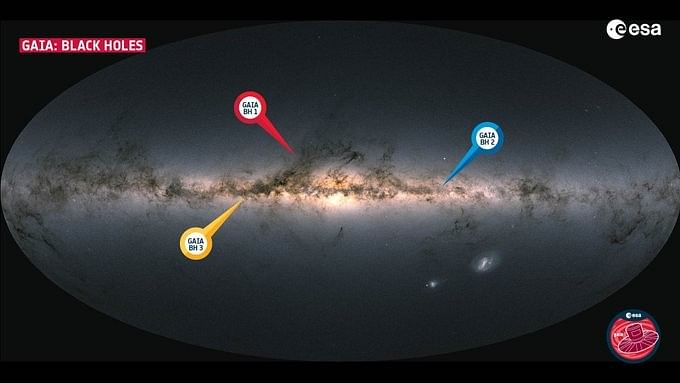
The big mass size of the black hole has been verified using the information from the European Southern Observatory’s Very Large Telescope.
Credit: X/@esa
With a mass 33 times bigger than that of the Sun, astronomers of the European Space Agency (ESA) have found the biggest black hole in the Milky Way galaxy, known as Gaia BH3.
The revelation of the black hole, which levies a wobbling movement on the nearby star revolving around it, was observed when data was being collected from a 'Gaia mission' of the ESA.
The ESA said, "Remarkably, this black hole is also extremely close to us - at a mere 2000 light years away in the constellation Aquila, it is the second closest known black hole to Earth."
A member of the Gaia collaboration Pasquale Panuzzo who is an astronomer from the National Centre for Scientific Research (CNRS) at the Observatoire de Paris - PSL, France, said, "No one was expecting to find a high-mass black hole lurking nearby, undetected so far."
"This is the kinds of discovery you make once in your research life," said Panuzzo.
The big mass size of the black hole has been verified using the information from the European Southern Observatory’s Very Large Telescope (ESO's VLT).
The last identified black holes known as Gaia BH1 and Cygnus X-1 were 10 and 21 times bigger than the Sun, respectively.
Credit: ESO/M. Kornmesser
The last identified black holes known as Gaia BH1 and Cygnus X-1 were 10 and 21 times bigger than the Sun, respectively.
The ESA said in a statement that the Gaia BH3 seems to exceptional due to its tremendously huge mass size which is 33 times the solar mass.
Ground-based studies were used to affirm Gaia BH3's discovery, which also unveiled the properties of the star near the black hole enabling the astronomers to measure the hole's exact mass size.
Astronomers who have found black holes earlier speculated that black holes are formed due to collapse of huge stars in space which have a chemical composition of hydrogen and helium.
Due to such a chemical composition, these dead stars are believed to have high-mass residue which create black holes where they fall.